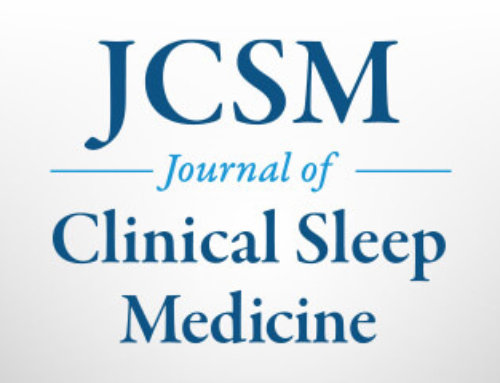Westchester, Ill. –A study in the Aug. 15 issue of the Journal of Clinical Sleep Medicine shows that surgical weight loss results in an improvement of obstructive sleep apnea (OSA), but most patients continue to have moderate to severe OSA one year after undergoing bariatric surgery. Results of this study suggest that it is the severity of the condition, rather than a patient’s pre-surgical weight, that determines if OSA will be resolved.
Results show that bariatric surgery reduced body mass index (BMI) from an average of 51 to 32 in 24 adults with OSA. At the one-year follow-up, however, only one participant (4 percent) experienced a resolution of OSA, and the majority of the study group (71 percent) still had moderate to severe OSA. Patients who have residual OSA after surgery are encouraged to maintain ongoing treatment with continuous positive airway pressure (CPAP) therapy.
The prevalence of OSA among obese individuals is high and correlates with increasing BMI; among the severely obese, the prevalence of OSA ranges from 55 percent to 90 percent. OSA itself may promote weight gain through ineffective sleep, impaired glucose metabolism and imbalances of leptin, ghrelin and orexin levels.
“We were surprised by the severity of the residual sleep apnea in postoperative patients,” said principal investigator Christopher J. Lettieri, MD, Chief of Sleep Medicine at Walter Reed Army Medical Center. “The majority of individuals still had moderate to severe OSA.”
“The second surprising finding of this study was that despite the persistence and severity of the disease, most people thought their sleep apnea was resolved after their weight loss and only a few still used CPAP,” he said.
According to Lettieri, weight loss has many overall benefits; however, most people should not assume their OSA will be resolved after they have lost weight. The baseline apnea-hypopnea index (AHI), a measure used to identify the presence of OSA and define its severity, is the most important determinant of whether or not an individual will be cured of the disease. Individuals with a lower AHI may experience complete resolution of their OSA.
Twenty-four consecutive patients referred to the Pulmonary Critical Care and Sleep Medicine Service for preoperative evaluation of excessive daytime sleepiness (EDS) prior to bariatric surgery were included in the study. Patients on average were 47.9 years, and most (75 percent) were women. Each was assessed by overnight polysomnography prior to and one year after undergoing bariatric surgery.
Postoperative polysomnography revealed reductions in the AHI in 22 subjects. Of the 12 patients whose AHI improved sufficiently to reclassify their OSA severity, three (12.5 percent) improved by more than one category of severity. Twenty-three patients had persistent OSA at follow-up. One patient had AHI less than five and no longer met the criteria for a diagnosis of OSA.
Although only seven patients (29 percent) subjectively complained of snoring postoperatively, all but one (96 percent) snored during the follow-up polysomnography. Significant improvements were noted on the Epworth Sleepiness Scale (EES); however, nearly half reported a persistence of daytime sleepiness and more than half (54 percent) continued to have ESS scores greater than 10.
The authors of this study note that patients and physicians need to recognize that the subjective resolution of snoring after surgical weight loss does not equate to improvements or cure of OSA.
The Journal of Clinical Sleep Medicine is the official publication of the AASM.
###








